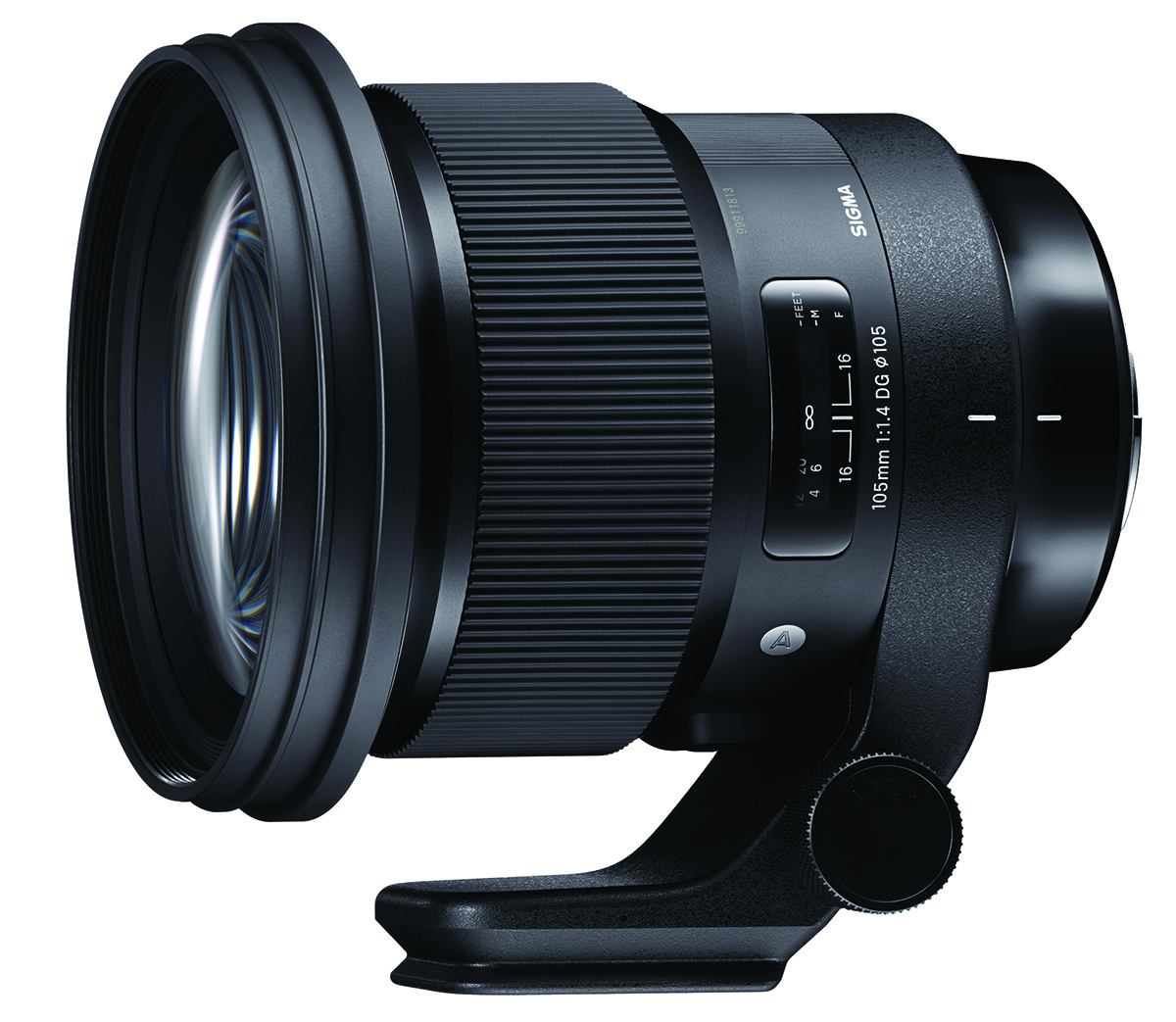Review: Sigma 105mm F1.4 DG HSM Art Lens
Photographer Ellis Vener reviews the Sigma Photo 105mm F1.4 DG HSM Art lens, which Sigma calls Bokeh Master.
12.24.2018
For the love of Bokeh
The Sigma Photo 105mm F1.4 DG HSM Art lens is part of the company’s Global Vision line of Art, Sport, and Contemporary lenses. It is a solidly constructed, large-aperture, large-bodied (for its focal length) autofocus lens designed for full-format (24x36mm) cameras. And like the other Sigma Art lenses, it delivers superb optical performance at a reasonable price. One thing about Sigma’s Art series lenses is that they make you feel as if the people who make them truly love producing great lenses.

Even for a large-aperture short telephoto, this is one big, heavy lens. It boasts a 4.6-inch diameter and a 5.2-inch length, and weighs in at 53.72 ounces without the included removable rotating tripod mount (61.83 ounces with mount). Much appreciated is Sigma’s tripod mount foot that incorporates an Arca-Swiss quick-release plate. Despite the weight and the lack of an internal optical stabilization system, it’s easily hand-holdable when used with a Canon EOS 5DS.
Sigma calls this lens Bokeh Master. True to the nickname, it renders out-of-focus areas as pleasingly soft-edged shapes. What impresses me more is how gently the lens produces transitions from crisp focus to out-of-focus areas in front of and behind the plane of focus. This is especially evident with portraits. This is how the lens earns its nickname. Performance at f/1.4 is great and improves as you stop down to about f/9. Below f/9 there is slight but progressive falloff in acuity, but unless you spend your days photographing resolution targets and brick walls and then pixel-peep to see the differences between frames made at different apertures, you’d have to look really hard to see the fall-off in sharpness. Likewise, the lens flare and glare suppression as well as micro-contrasttransitions are worthy of superlatives.
Getting light to behave that way requires a complex asymmetric optical design. Built around 17 large-diameter elements arranged in 12 groups, the lens is optimized to maximize acuity, minimize optical aberrations, and geometric distortions and to minimize falloff in illumination, contrast, and sharpness across the frame. The eye-pleasing bokeh is a side effect of this engineering. The aperture range extends down to f/16 and consists of nine overlapping curved blades. The lens takes 105mm filters.
The one downside of the lens is that autofocus is not particularly swift. It’s not slow, but this isn’t a lens I’d choose for swift and erratically moving subjects. Otherwise it’s more than adequate for any situation where you want subject detail recorded with a maximum amount of fine detail even wide open at f/1.4.

Photographed at f/2, this image shows the sharp light pole silhouetted against a dreamy bokeh sky. This due to a complex asymmetric optical design, which contributes to the heft and size of the lens.
The question to ask yourself here: Do I really need an f/1.4 lens? This is an especially crucial question when it comes to the 85mm to 135mm range, where there are several fine offerings, including some zooms, with f/2 or f/2.8 maximum apertures. What you’re paying for is one of those truly great lenses that is ideal for both razor-thin depth of field and higher shutter speeds at lower ISOs and low light work.
The street price for the 105mm F1.4 DG HSM Art lens was $1,599 for Canon EF, Nikon F, Sigma, and Sony E mount versions.
As Canon, Nikon, and other companies move to compete with Sony in the full-frame mirrorless camera market, we’re very likely at the final peak of lenses designed for the venerable single lens reflex camera type. Digital SLRs are far from dead, but with mirrorless designs liberating lens designers from the need to compromise design around the necessary space and mechanism needed for a reflex mirror, the writing is on the wall.
Ellis Vener is contributing editor for Professional Photographer.


